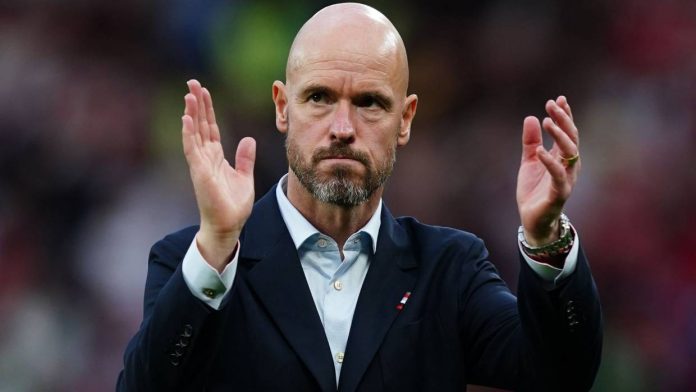Analysis of Vadim Lukomsky.
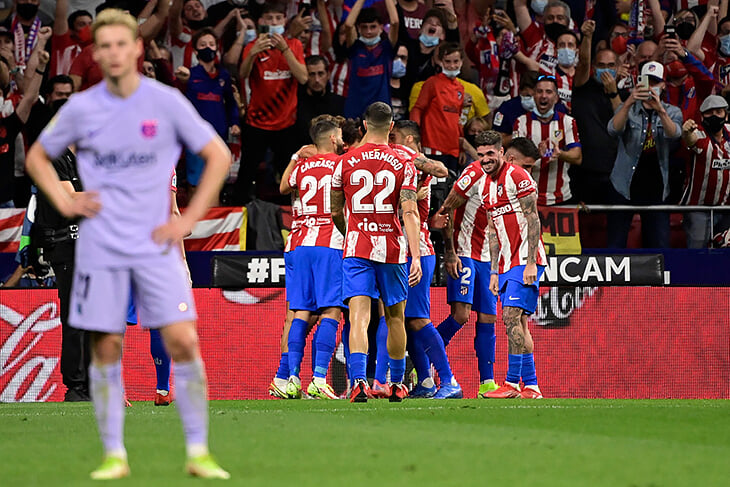
Atlético beat Barcelona (2: 0). It seems that it was the easiest and most confident victory over Barca in the era of Diego Simeone (traditionally he had problems here). Let’s go into the details.
1. There were two relative surprises with Atlético. Kieran Trippier and Antoine Griezmann did not start. In fact, both decisions of Diego Simeone are quite understandable. Trippier was slightly injured in the middle of the week, so he was only in the reserve, and his place was taken by the versatile Marcos Llorente. Griezmann, despite his stellar aura, is not yet integrated into the new structure of Atlético: his absence from the start for an important match reflects his current status.
Simeone chose the expected formation – 3-5-2 ( 5-3-2) with the transformation potential of 4-4-2.
2. But Ronald Koeman surprised (again!). The Dutchman is still looking for the optimal formation (not to mention the permanent traits of style). Over the past three meetings, he has tried three schemes – 3-5-2, 4-3-3, 4-2-3-1. Against Atlético, I formally chose 4-2-3-1, but with unexpected insides – Frankie De Jong on the right flank + personal pressure all over the field.

3. I will not say that the match was divided into two stages – this formulation presupposes the contribution of two teams to the formation of the picture of the match. Yesterday the situation on the pitch was completely controlled by one team – Atlético . Their behavior divided the match into two stages.
First half: Atlético in territory control mode. They catch Barça in moments of vulnerability to pressure, boldly meet with solid pressure and attack vertically.
Second half: Atlético with a two-goal handicap in the kill match mode. Deep block with total restriction of the opponent. Atlético did not show any activity of their own, but closed Barça as a benchmark. In a half with 71% of Kuman’s team, 1 shot from the free kick (and that one is far from being in possession – the moment for Coutinho after the loss of Hermoso).
4. The dispute between Gerard Pique and Sergi Busquets after the first goal is the embodiment of Barcelona’s tactical problems in this match.
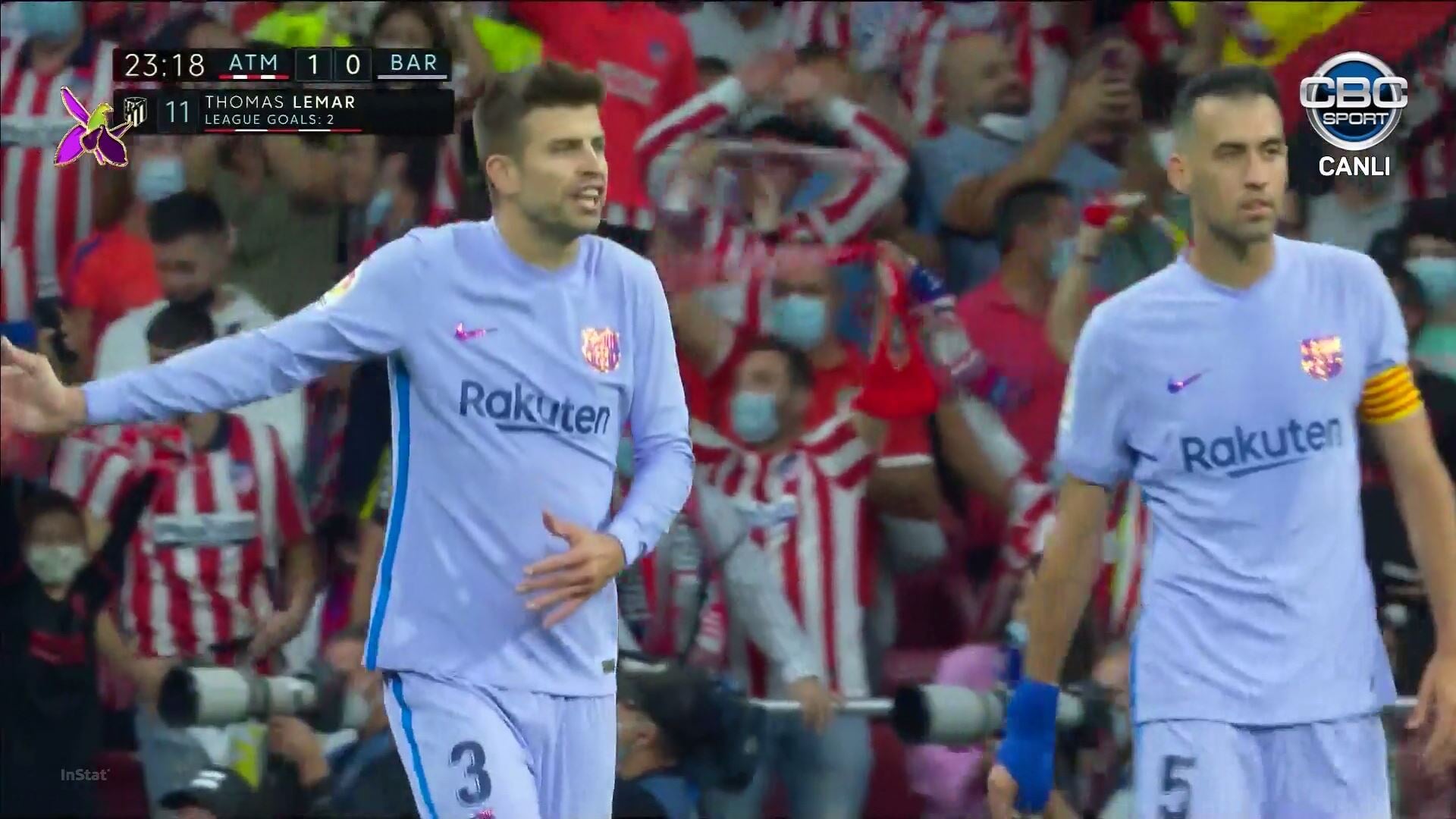
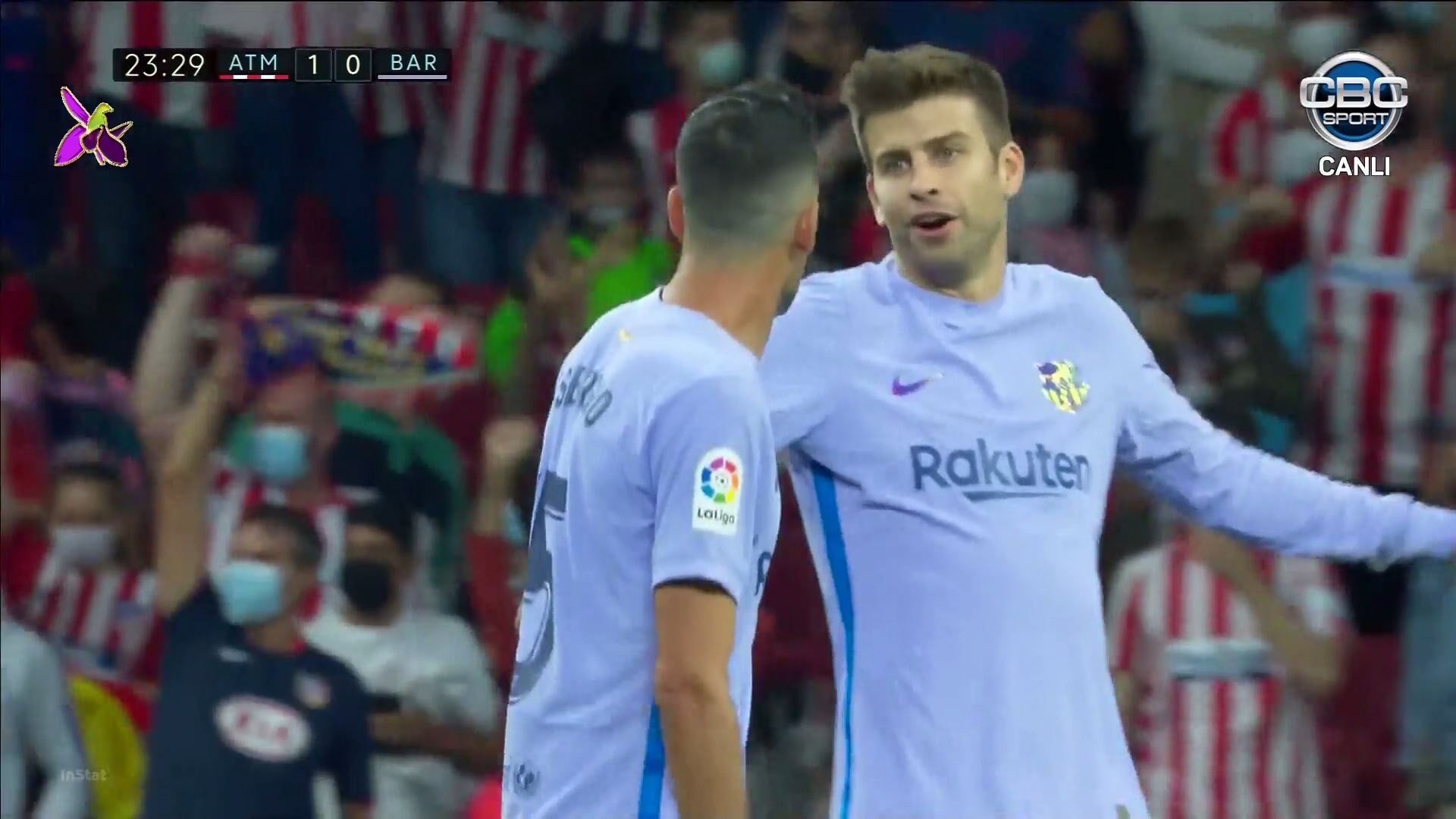
Screenshots are taken in InStatScout
If you carefully examine the gestures, the episode that caused the controversy, and the moments that preceded it, it will become obvious that they were arguing about the one who was supposed to play with Luis Suarez, who received a hectare of freedom and scored a goal.

Suarez did pass from the support zone – that part of it, which in position falls on Busquets. In the standard drawing, it is he who is responsible for this zone. But in a specific match, Barça put pressure on the opponent personally (Koeman’s plan, for which he specially adapted the scheme, mirrored the opponent). In the personal drawing with Suarez, Piqué had to act as closely as possible.
The key question is whether Barça should defend personally even in their own half, and at what point it is necessary to switch from a personal game to a defensive scheme ? Busquets is right, because formally Barça tried to put pressure at the beginning of this attack (therefore, it was possible to play out the whole episode like this). Piquet is right, because playing personally in his own half of the pitch is an incredible risk.
The real problem is that both of them (as well as partners) did not receive sufficiently clear instructions on the moment of transition from the staff to the zone from the trainer (otherwise there would be no dispute).
5. Personal pressure is a key part of Koeman’s plan … On the other side, its use was understandable. This approach is used by many teams (brightest of all “Atalanta”). It cannot be said that Barça acted really well. But the confinement to personal traffic was very obvious. Here they can be clearly seen:
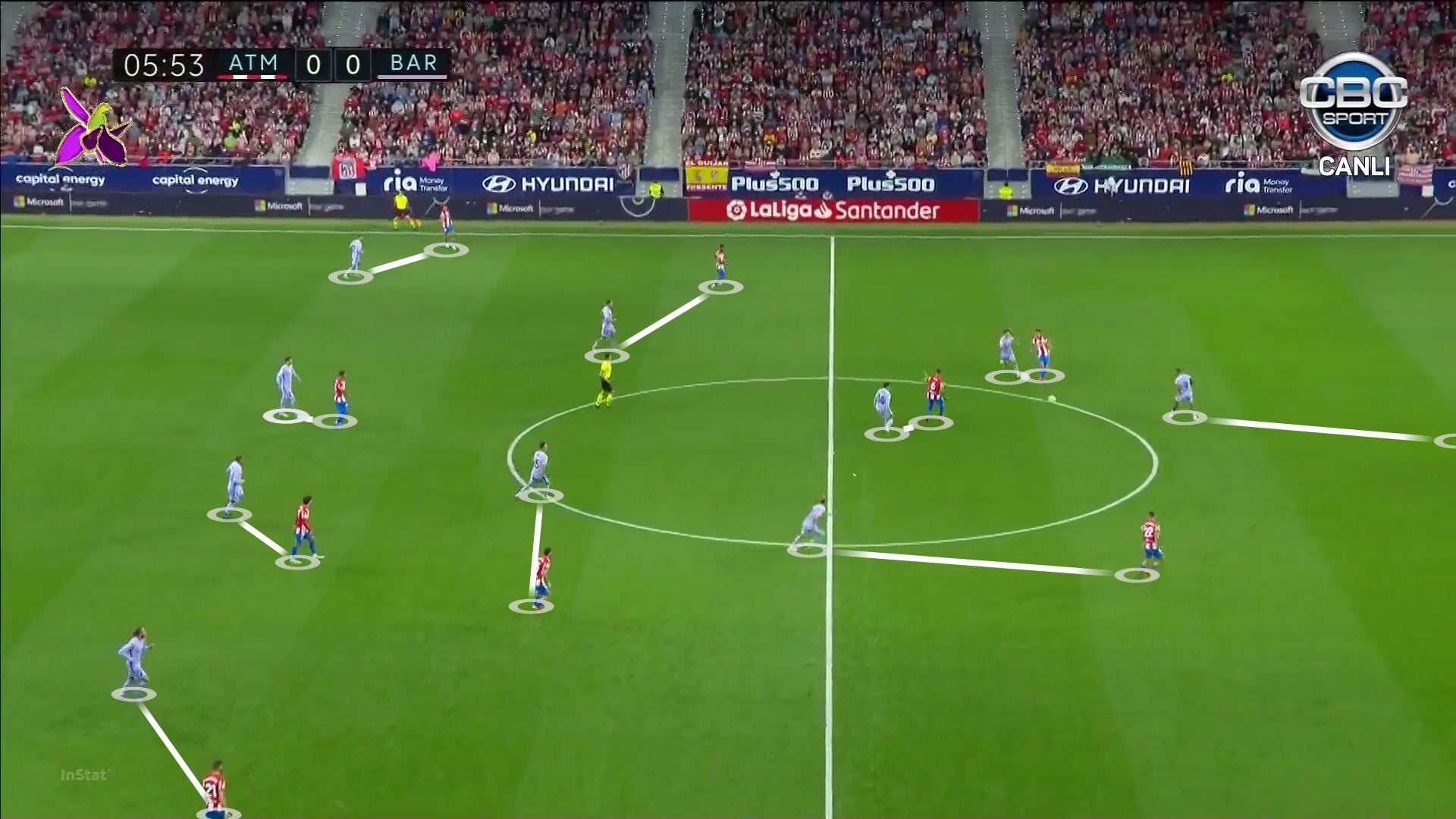
Due to the unusual positions of the Atlético players, this moment is even more indicative – Mingesa, playing out Carrasco, reaches the penalty area; Araujo moved from the center of defense to the other side to the flank behind Felix; midfielders Niko and Busquets run in different directions after their opponents:

6. On the other side, such pressure did not bring much benefit, but it didn’t hurt either. But in the moments of transition to positional defense and when trying to finish the game personally in their own half of the field, Barca failed. Attempts to play personally in their own half of the field led to gaps between the defenders, which the opponents willingly used:

It’s even worse when part of the team plays personally, while the other tries to maintain the scheme:
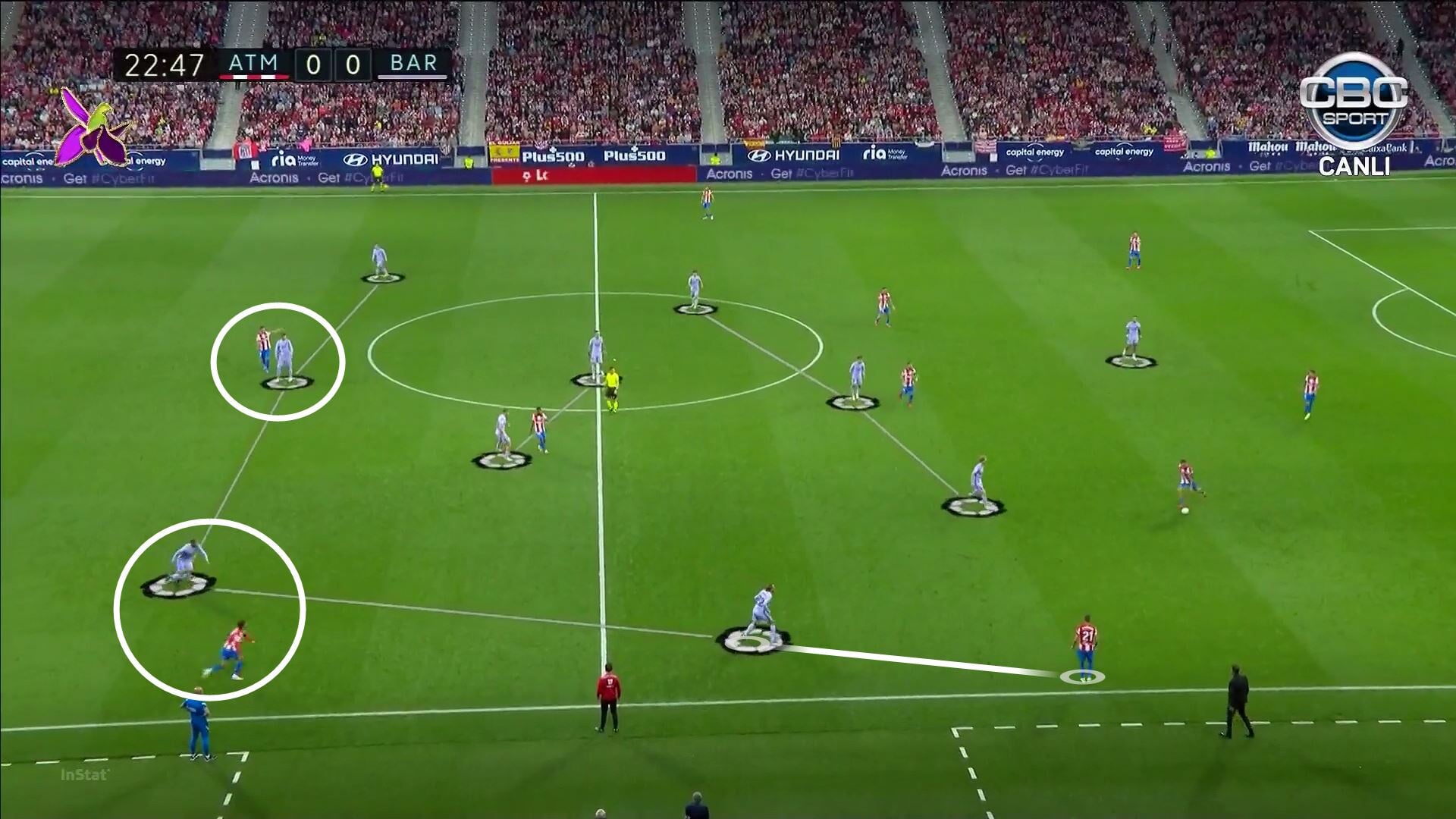
One of the tricks Atlético used to open up this flaw was jerks of midfielders from the depths. Tom Lemar was responsible for them. Such a spurt forces the defensive player either to follow him all the way (not the strongest side of Busquets and Niko), or to pass (Barça’s problems in this match). Lemar made such jerks the whole match and was logically awarded for them with a goal + a pass:
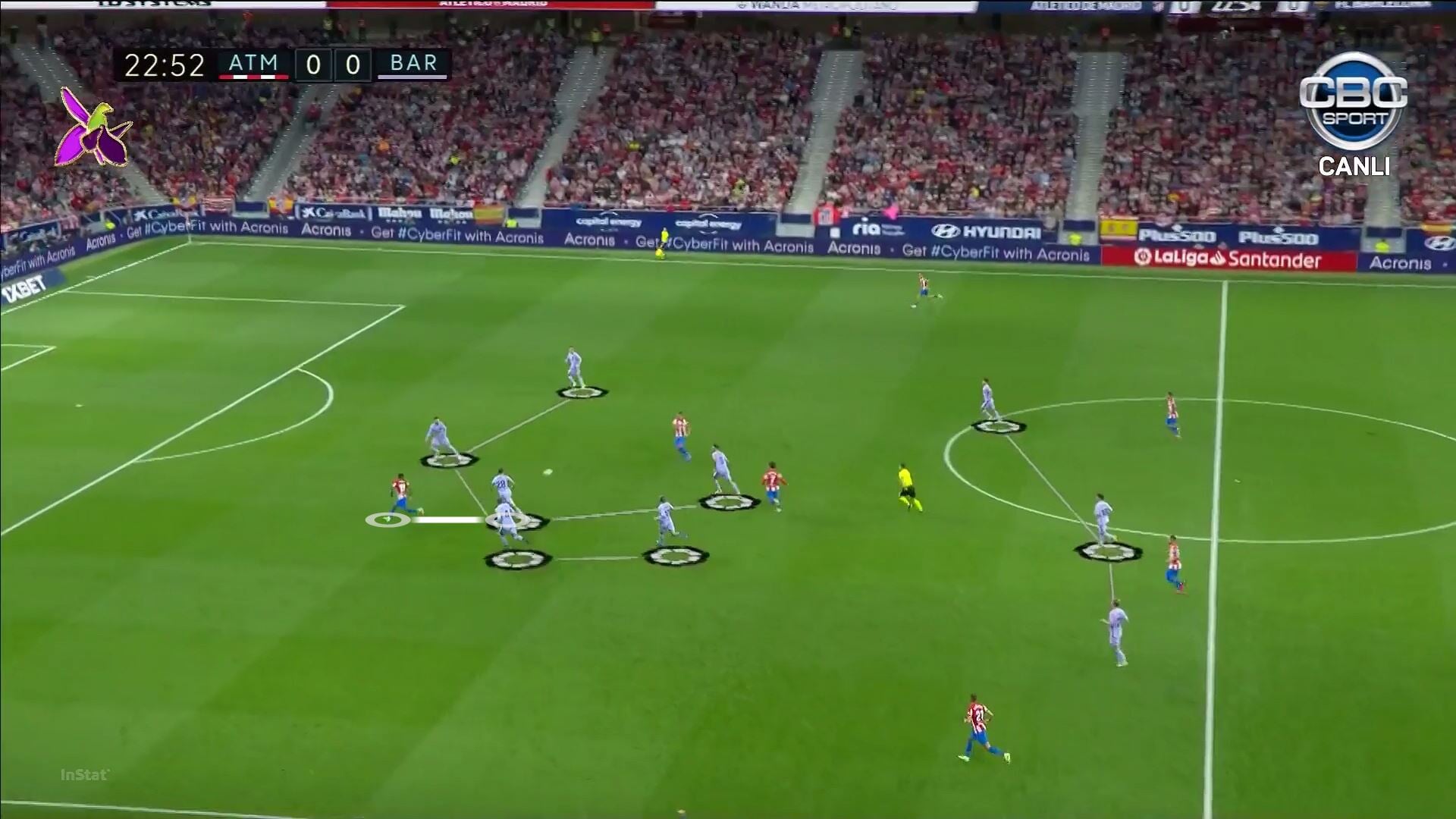

Lemar started as a right center midfielder, with Busquets as his opponent in the opening minutes. Sergi is not very fast, but at least he played out the Frenchman carefully. In the course of the first half, Simeone switched places with De Paul (probably, having paid attention to the specifics of Barça’s staff). Now the opponent was Nico Gonzalez. It was this zone that eventually broke at Barça.
7. Another ridiculously unequal duel in which the Barça player formally failed ( in practice, he was rather substituted by the coach, who should have better understood his capabilities) – Felix against Araujo.
Ronald Araujo is not fast enough and is not mobile enough against the background of Felix. This was especially evident in the flank areas, where João deliberately went after the ball. The Portuguese shifted to the left flank, leading Araujo behind him. This created a double advantage – first, the gap between him and Piquet, which can be used; secondly, a duel in which the Atlético player has a clear advantage.
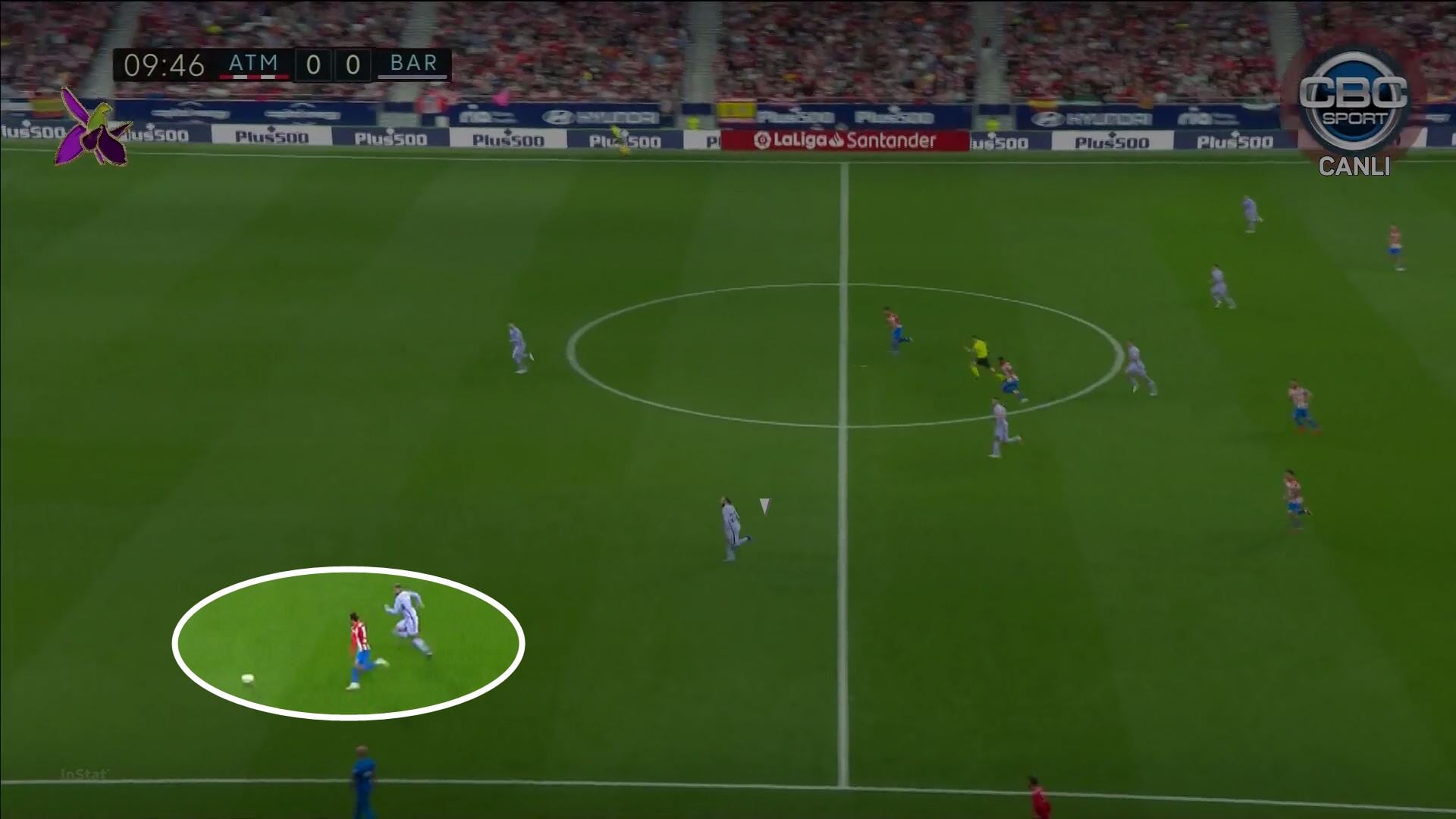
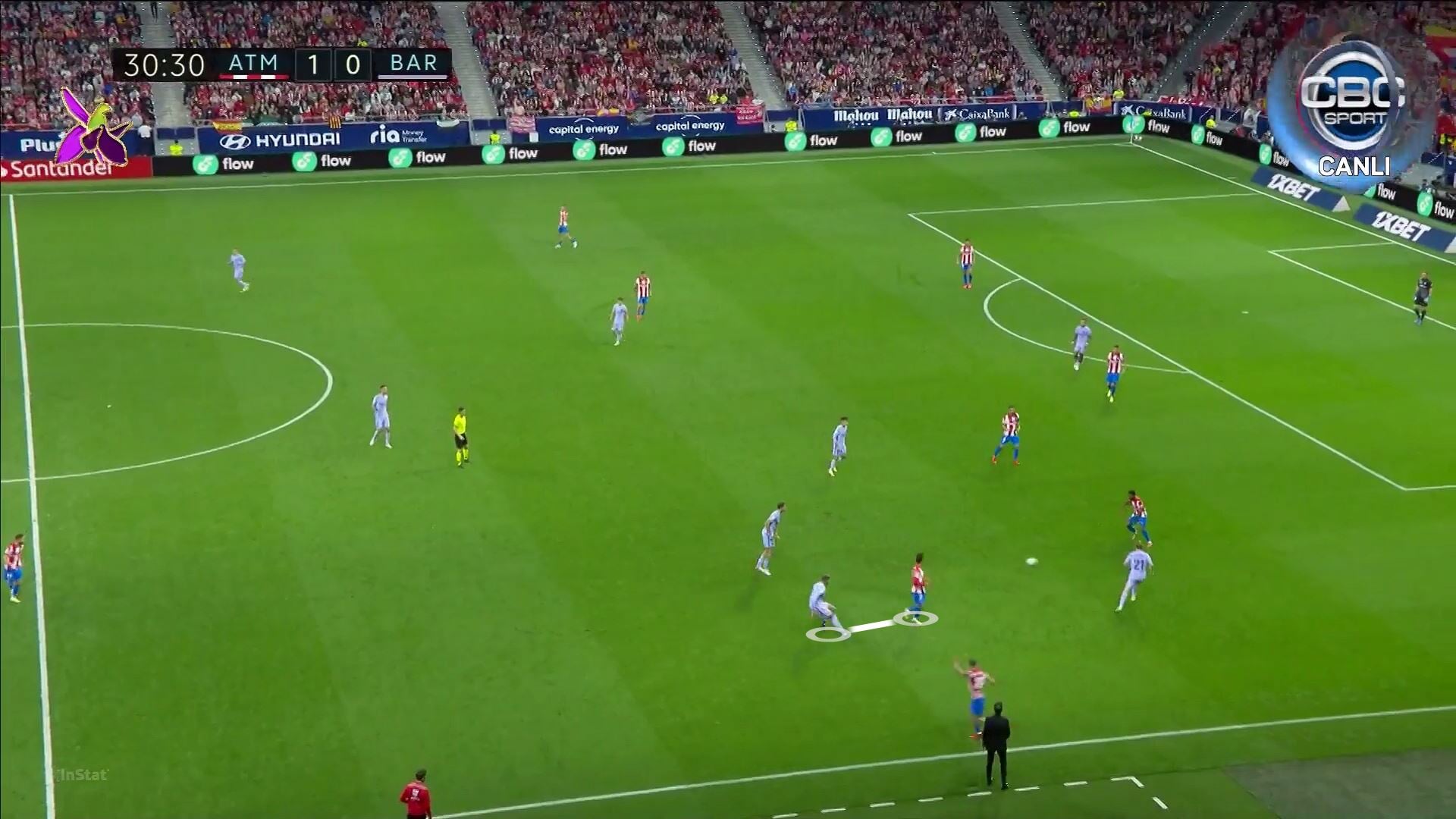
The play on the first goal perfectly underlines the depth of the problem – Araujo not only played not tight enough, but also felt that it was safer to open the center to the opponent than to send him to the flank.
8. A very similar situation in a pair of Suarez Pique. The total domination of the Uruguayan, who, in his own way, destroyed personal computers. Suarez’s weapons were well-timed breaks and touch-ups.
Unlike Araujo, Pique did not run after Suarez absolutely everywhere, but tried to transmit when a tight personal game was meaningless. But then again – due to problems at the team level, there was often no one.
The fact that two centers so different in style failed, eloquently forwards the questions to the coach. One tried to follow the instructions 100%, but the instructions combined with the opponent’s personality revealed his weaknesses. Another tried to read the game and act more intelligently / flexibly, but failed due to lack of support from partners.
9. In contrast to this chaos of compliments, Atlético deserves no ball (although it is not e surprise). Simeone’s team started in a 5-3-2 formation with a fairly high lane. At this point, a pair of forwards pressures Barça’s center-backs to prevent a pass through the center (but even if the pass passes, it’s 3-for-2 in Atlético’s favor):
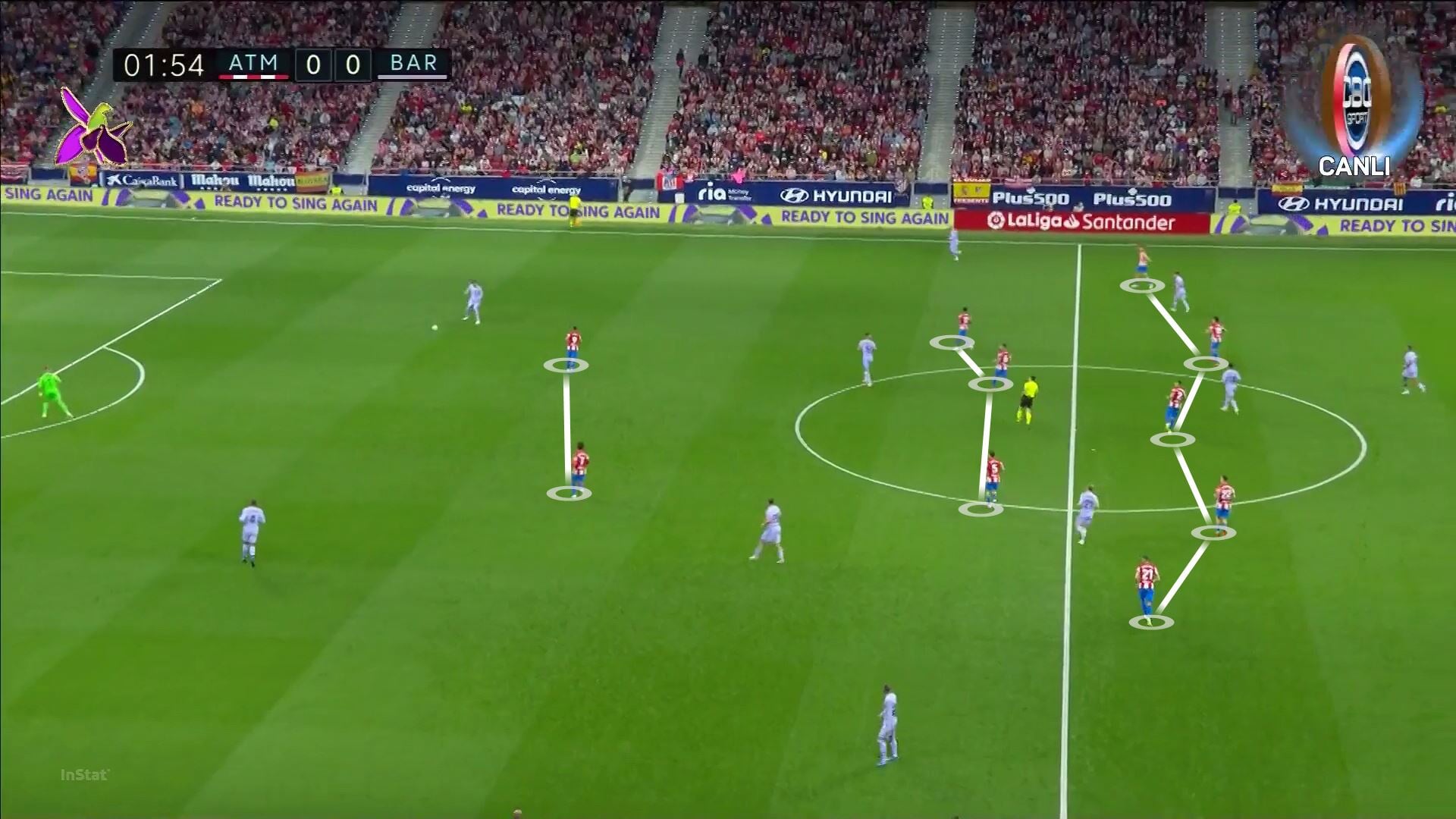
When it becomes obvious attacking flank, Atlético switch to four – in this case Llorente moved into midfield to cover Desta:
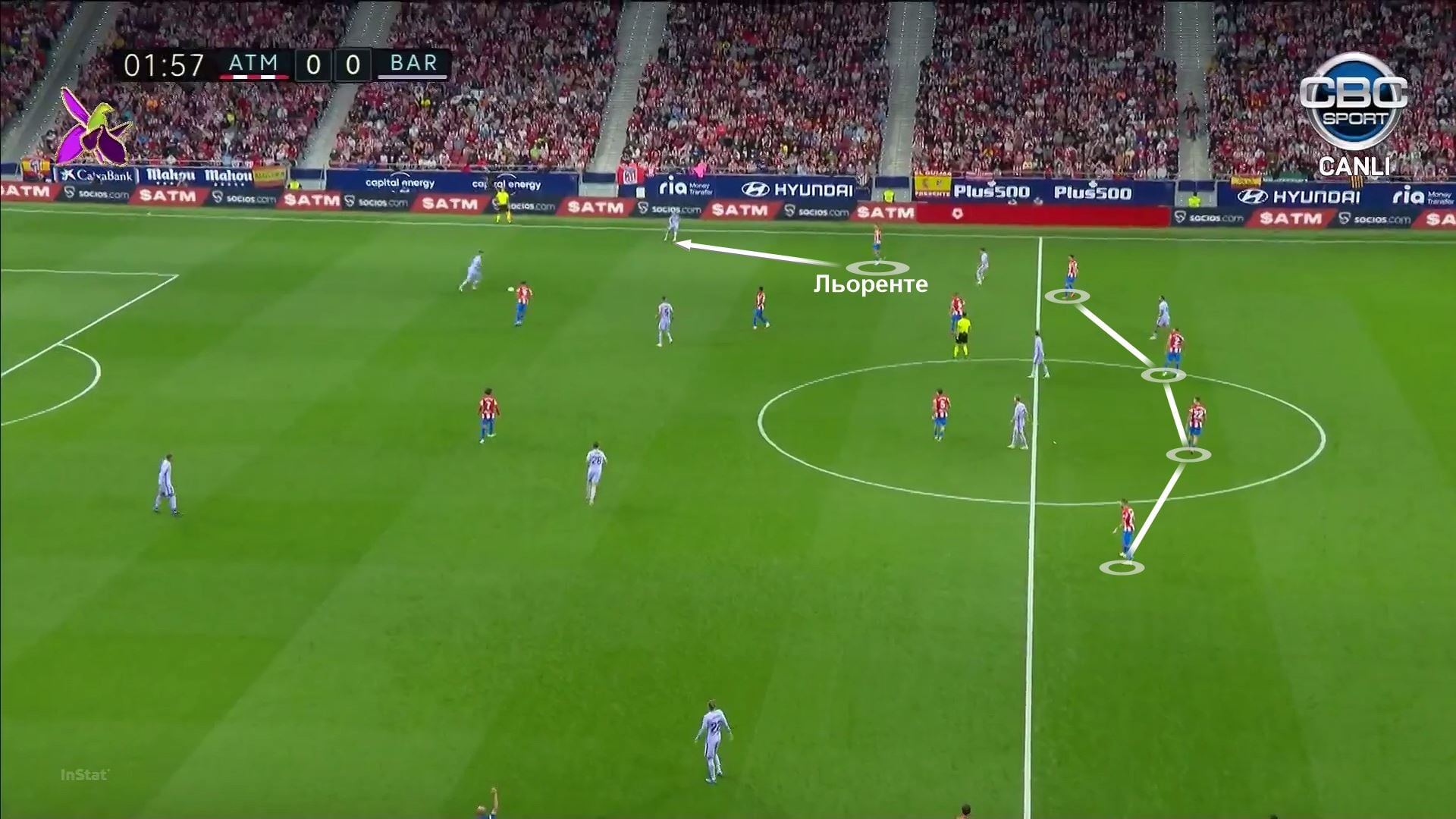
A similar transformation is possible on the other edge – there Carrasco comes forward:
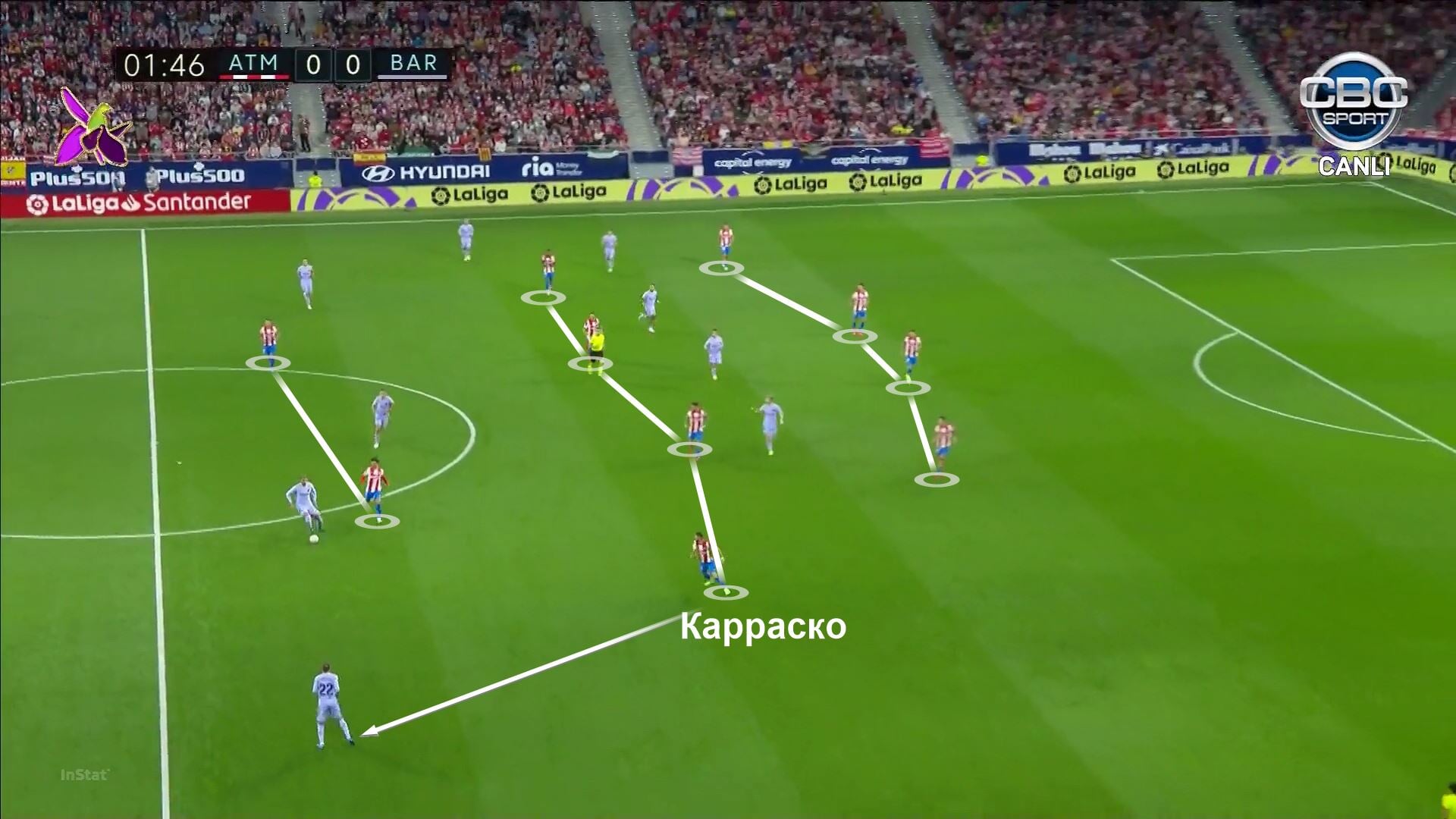
In their own half, Atlético rebuilt to 4-4-2 at times like this. Pressing on a stranger, it formed something like a diamond. The coherence of the team during such transformations was at an amazing level.
10. In addition to the avant-garde use of personal pressure, Koeman surprised with the line-up of midfielders. Their position without the ball was tailored for the personal, but with the ball, the midfielder five got freedom, which in theory looked interesting.
Busquets, Nico, Gavi, Coutinho and De Jong filled the central zone. At the same time, they could be located in different variations and freely change positions. Here are some attempts at this:

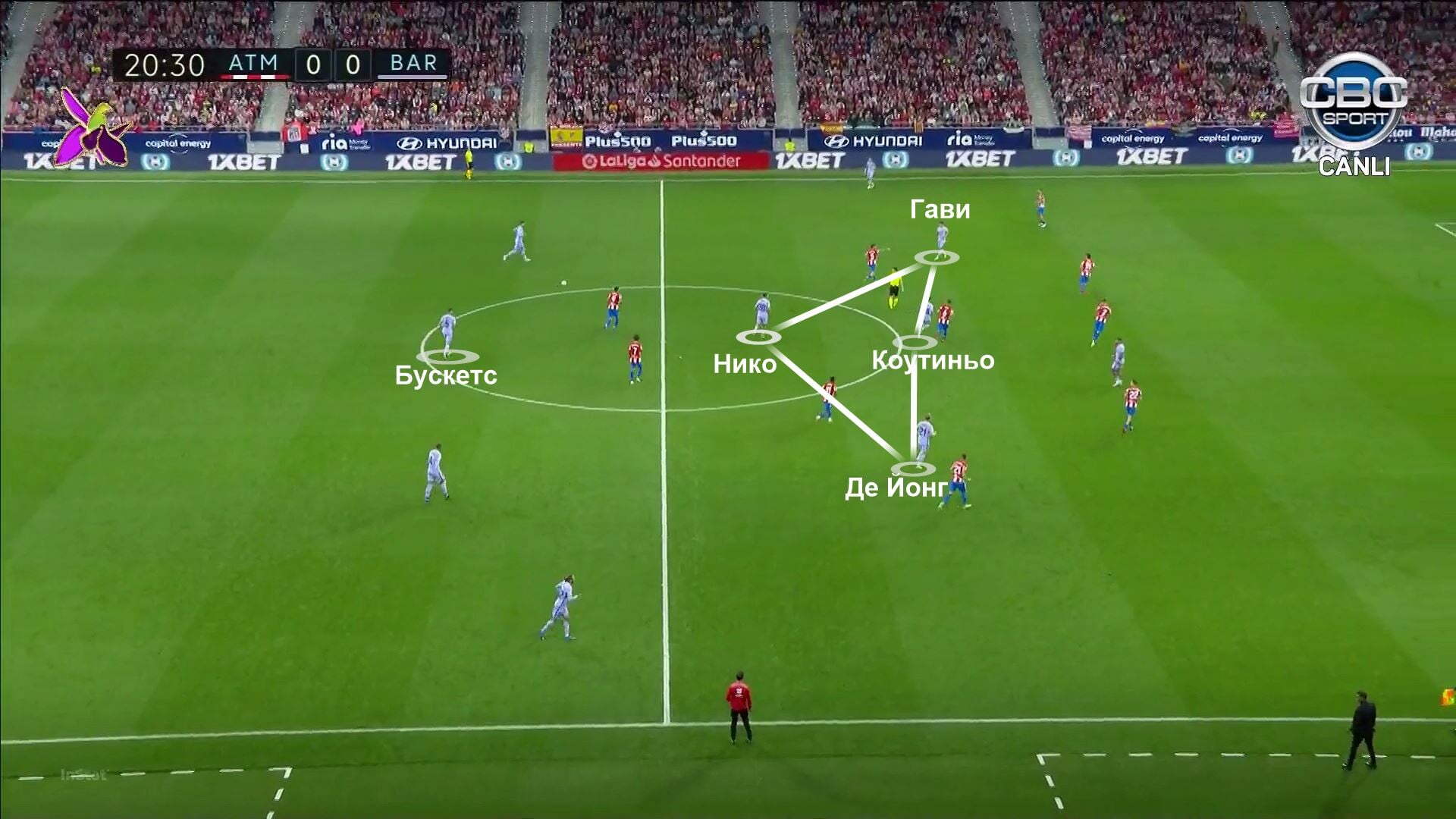
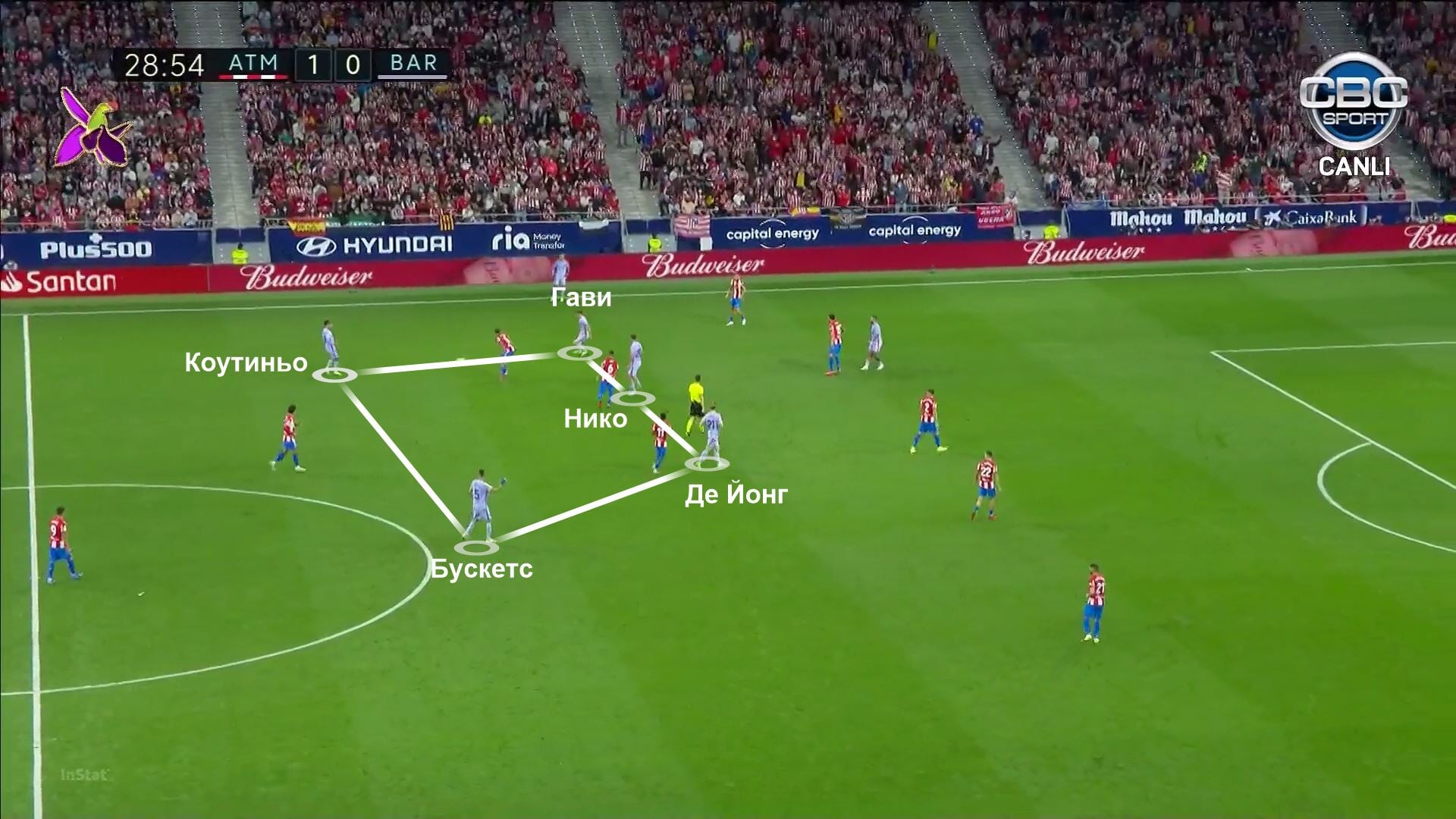
They fill the central zone everywhere, but the ratios change. The likely goal is to confuse the opponent, while not taking zones away from each other.
11. In practice, even this interesting idea turned out to be a dead end. There were two key problems. Dampness in terms of embodiment. The five did not always manage to diverge. Sometimes comical (from the point of view of dividing zones) situations arose – all five lined up in a line, and no one was loading the pivot.
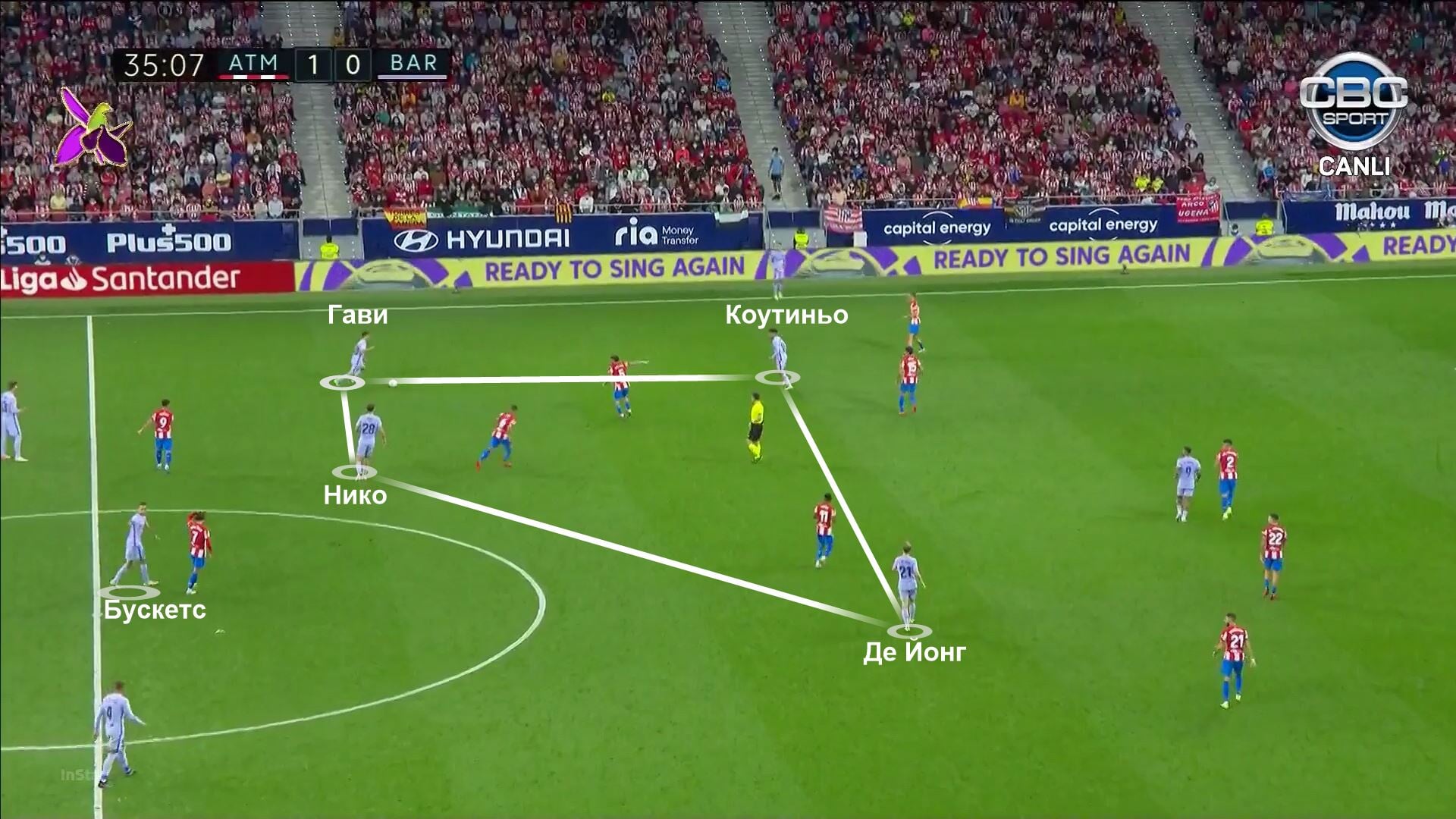
They interfere with each other, and do not create options for advancement.
The second problem is the lack of width in the attack and openings behind the back. For the idea with five technical midfielders to work, you need to create conditions for them.
First, the opponent should not be able to pull all players into the center to neutralize the five. This happens if there is a threat on the flanks to keep in mind. At Barça, Dest (right-back on the left flank) and Minges (center-back) played around the edges. They did not carry the necessary threat and did not take up a sufficiently bold position.
Secondly, we need jerks behind the back of the opponent’s defenders. Otherwise, the midfielders (even in comfortable conditions) will simply pass without aggravating (no options). In fact, the described problems could be solved synchronously. For example, Jordi Alba, who missed the match, is capable of giving both width in attack and jerks. Ideally, more than one source is needed. There were problems with that yesterday, which made Koeman’s idea a little pointless.
12. Formally, there is a third problem (more individual): waste of Frankie De’s talents Yong as right winger .
Location in this area makes it impossible for the team to use Frankie when advancing the ball. Even when Barça were in possession of the ball, De Jong was constrained by this position. If he left the flank, then, as a rule, he went into the penalty area – he played a hidden striker there.
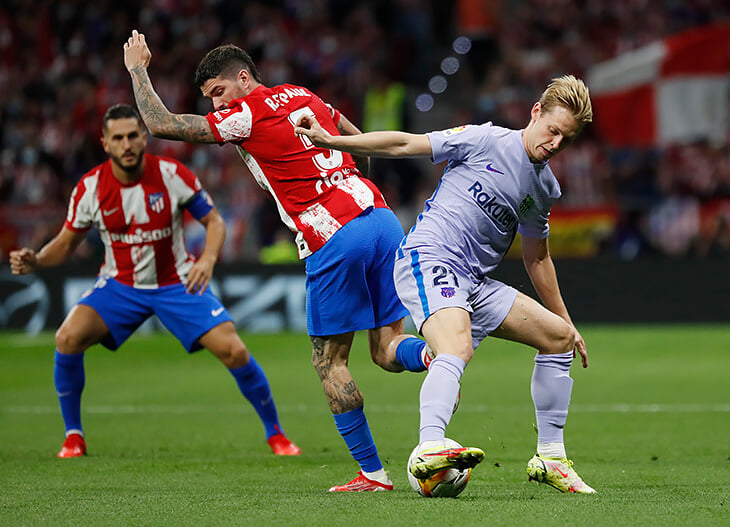
Without the ball, De Jong had to play against Hermoso under personal pressure. Here, too, it turned out rotten: periodically turned off (for example, the first goal began precisely with the advance from Hermoso, who had time to find this pass). … Any other Barça player had a minimum of 23 (23 – Ter Stegen). By rewarding De Jong with a flanking role, Koeman isolated him from the ball .
13. During the break, Koeman replaced Niko Gonzalez with Sergi Roberto. There were a few more changes within the scheme: Frankie went to the central zone, the flanks remained on Coutinho (left) and Gavi (right). Roberto acted in the role of ten more dynamically than Coutinho – sometimes he sank into a triangle to Busquets and Frankie, sometimes he opened near Depay.
Barcelona began to move the ball faster. I managed to squeeze the opponent. The team has improved in terms of delivering the ball to the zones from which, in theory, you can create chances (it seems that now this is a compliment). But there was still no coherence and clear ideas in positional attacks (as well as width).
14. Simeone did not resist changing the pattern, but slightly adapted. With Barça fatigued and progressing in passing speed, he went 5-4-1 for the finish. The rebuilding happened after Correa and Griezmann left:

15. In the end there were several “Cumanisms.” If anything, “cumanism” is an unusual tactical move that formally shows that the coach is trying to do something, but practice only emphasizes the degree of his despair . Even managing the team by phone, Ronald remained true to himself.
Already become traditional “Cumanism” with the transfer of Araujo to the position of the striker:

And here’s a more recent one – Clement Langle as left-back:

Do you think that Ricky Puch’s appearance on the field itself can be considered “cumanism”? Are you a cumanist when you play FIFA or FM?
16. Koeman’s strange decisions have buried Barça in this match. Strange, not bad, is the most accurate word.
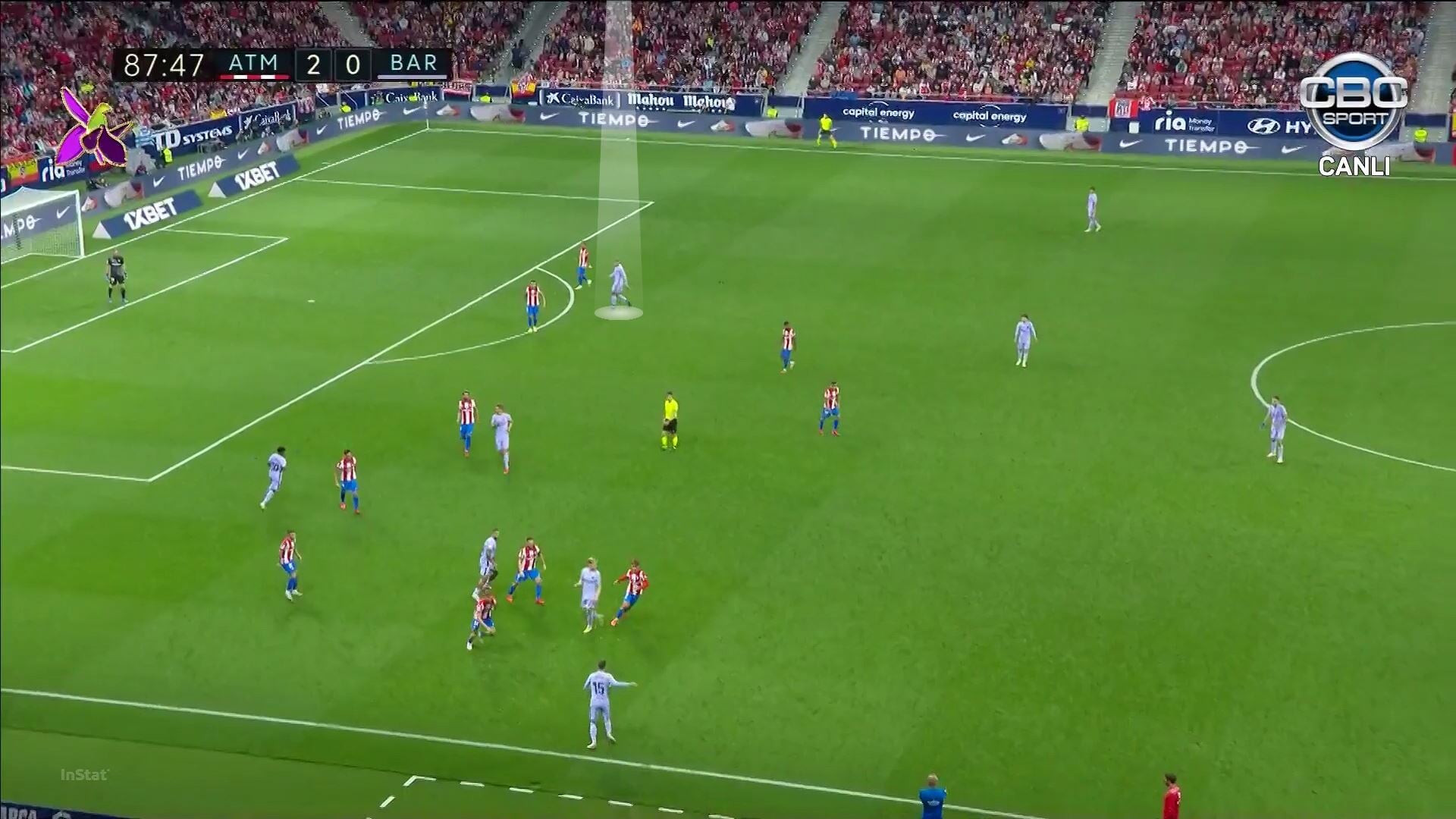
Personal pressing without players who are comfortable / accustomed to it, and working out the details of its implementation. Or five swapping central midfielders, but without support on the flanks and options for escalation. All this is in contrast to Simeone’s simpler but more accurate moves (for example, the change of positions of De Paul and Lemar during the first half).
Ronald definitely cannot be accused of inaction. The problem is that his actions inflict even more damage on Barça than potential inaction (just playing in the most familiar pattern with the players in the best positions without adapting to the opponent at all). This is a bold subjective statement. In no case do I insist, but I also can’t get rid of the feeling after yesterday’s match.
📞 Having scored against Barça, Suarez showed his phone (says that not to Kuman). We almost believed
, 2: 0 – 44 Suarez .
 Karrasko
Karrasko 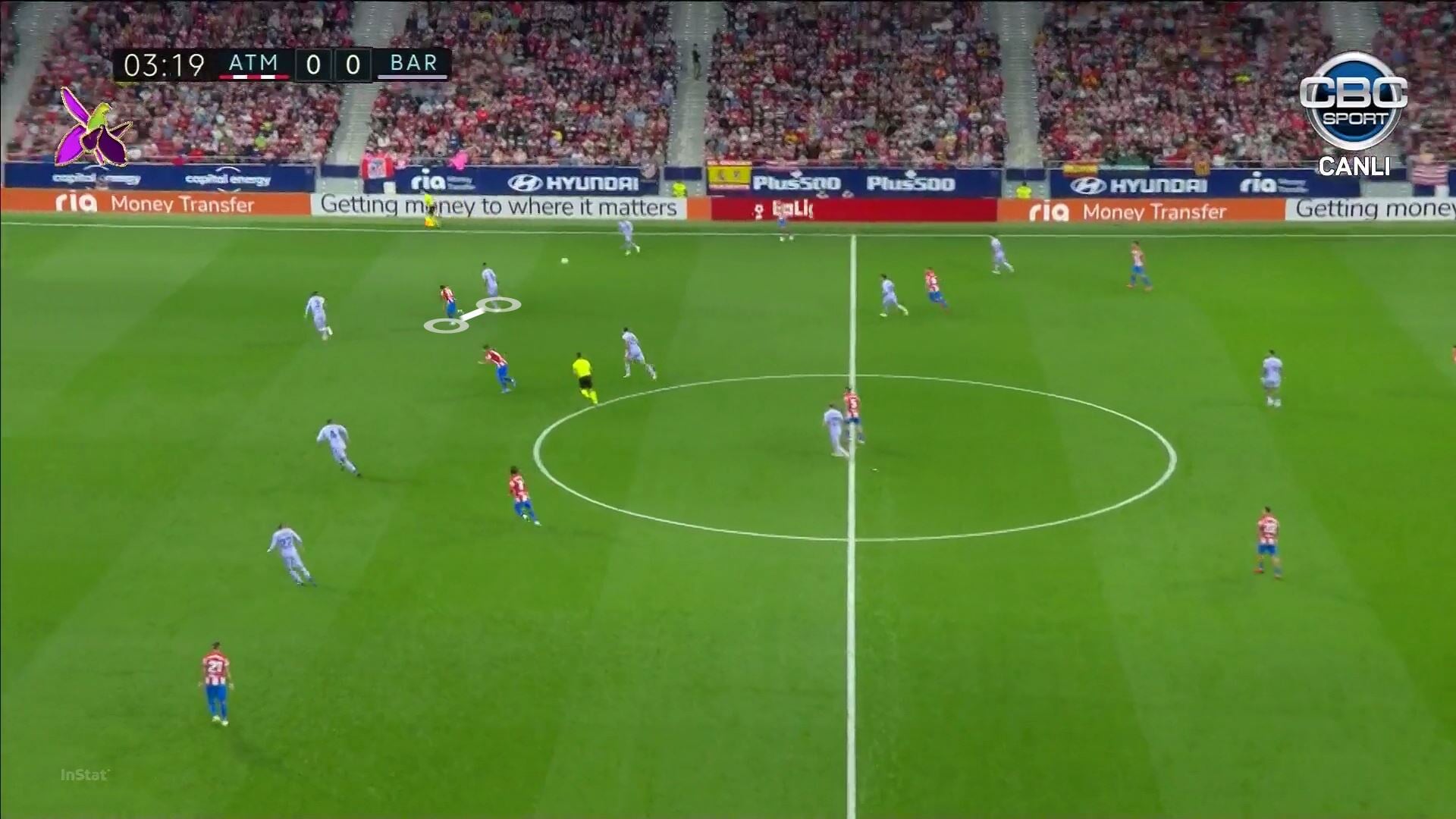
 Lodi , 81), Suares
Lodi , 81), Suares 
 Grizmann , 72),
Grizmann , 72),  Joao Felix
Joao Felix , Mingesa
, Mingesa 
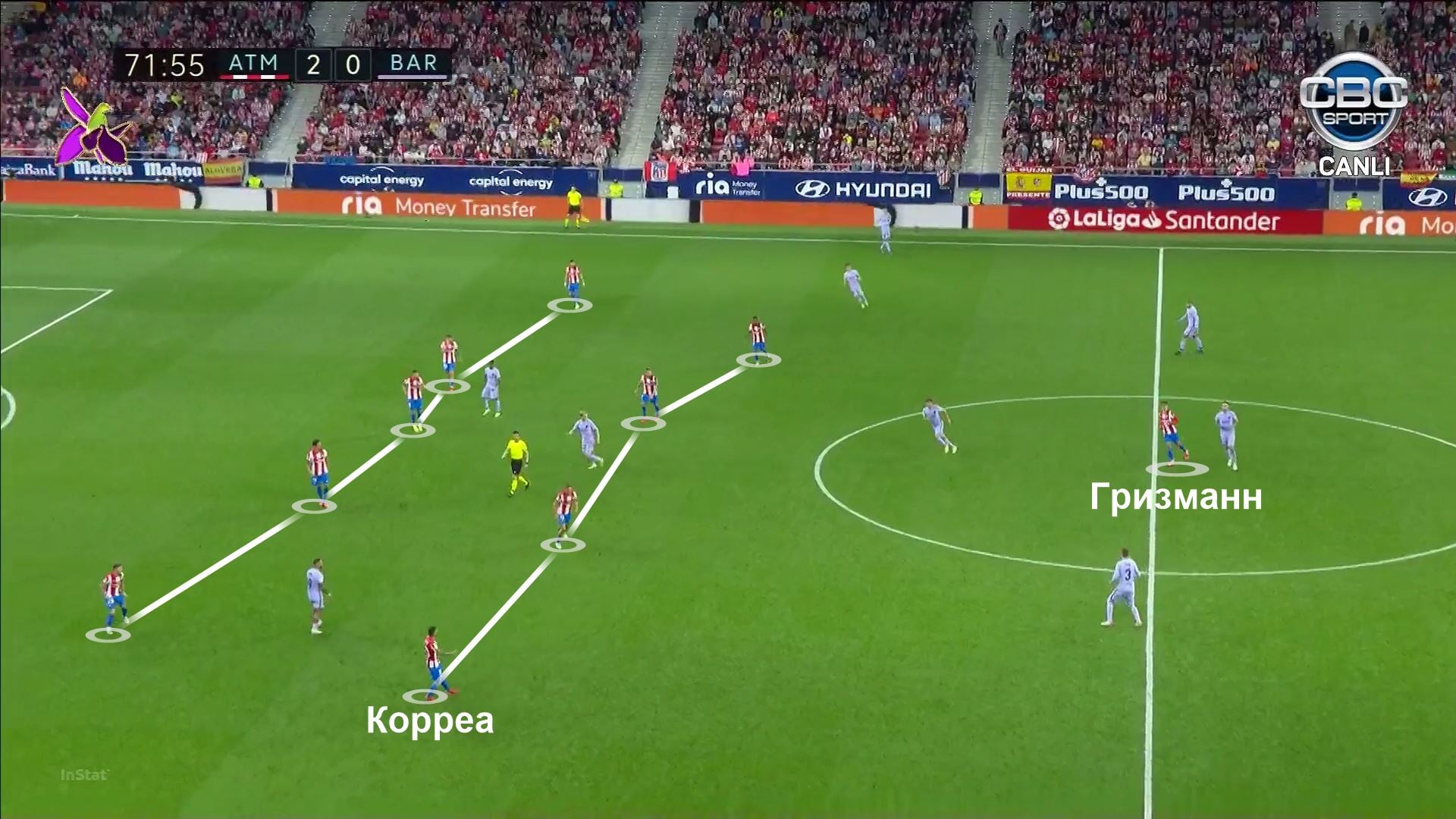 de Jong , 75), Arauho , Pike
de Jong , 75), Arauho , Pike 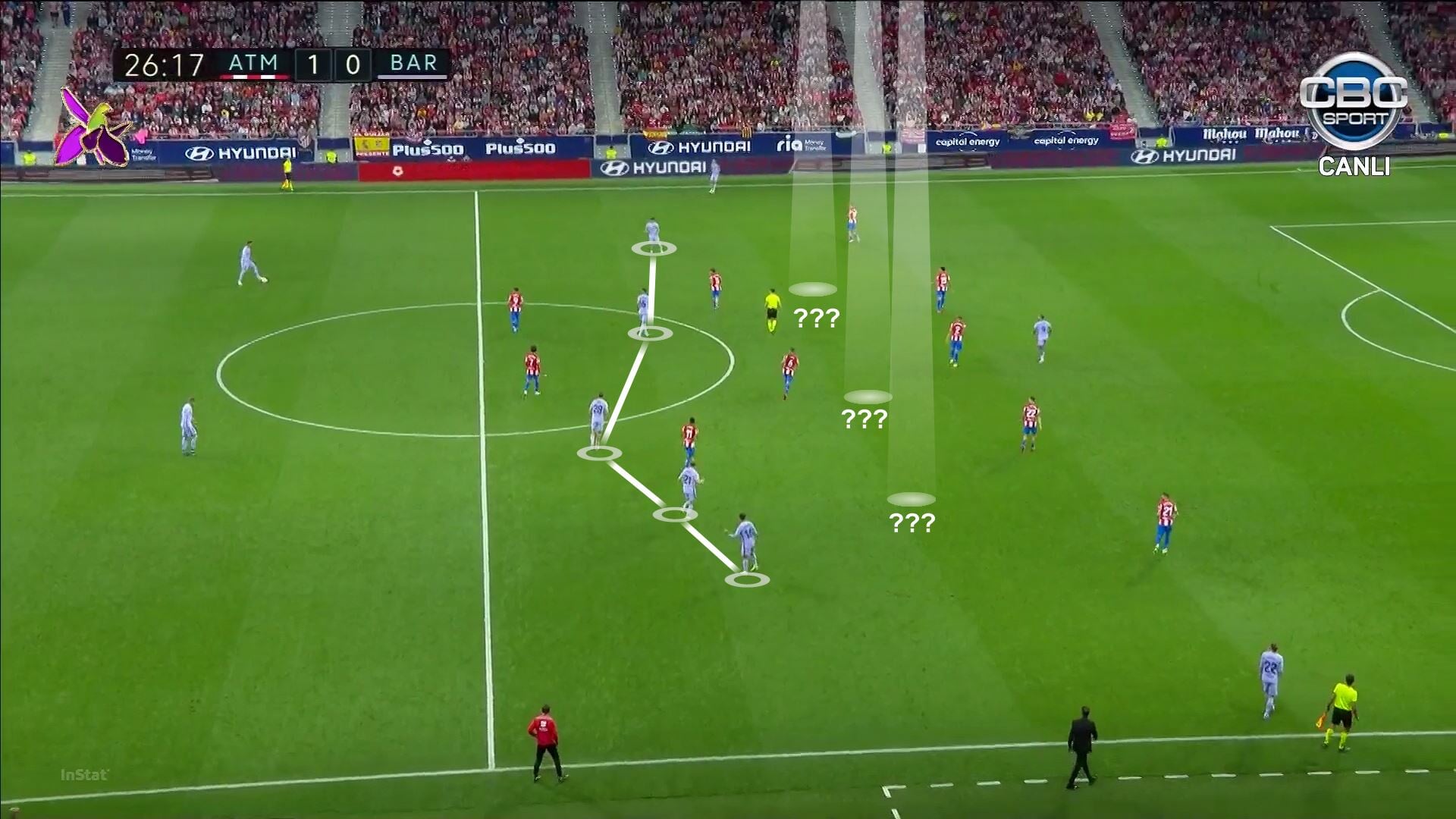 , Dest
, Dest 
 Flax see , 86), de Jong
Flax see , 86), de Jong  , Coutinho
, Coutinho  Fati , 64), Gavi
Fati , 64), Gavi 
 Coup , 75), Niko Gonsales
Coup , 75), Niko Gonsales 
 Serge Roberto , 46), Buskets ,
Serge Roberto , 46), Buskets ,  Depay
Depay 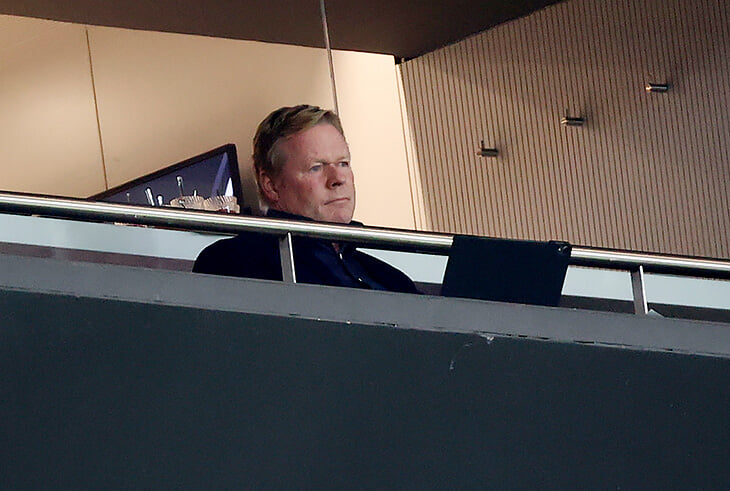 .
. 
 Gavi
Gavi











